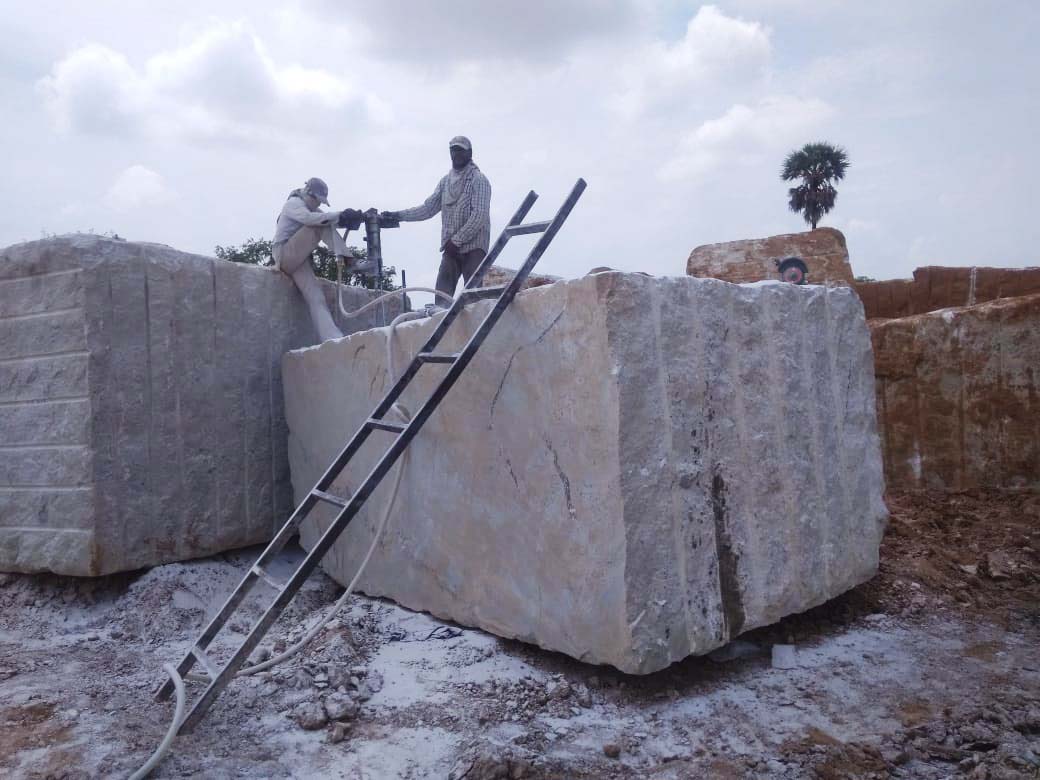Granite Quarries in South Africa Marvels: Discovering the Quarry Landscape
Granite Quarries in South Africa Marvels: Discovering the Quarry Landscape
Blog Article
Revealing the Mysteries of Granite Quarrying: Where Toughness and Sophistication Meet
The world of granite quarrying is a world where the raw strength of nature converges with human virtuosity to develop frameworks that stand the examination of time with an air of elegance. From the midsts of quarries to the thorough polishing in workshops, the process of changing granite right into building wonders is a complex dance of custom and technology. As we peer into the depths of this ancient craft, we begin to discover the concealed details that form the very essence of our built setting.
The Origins of Granite Quarrying
In the annals of architectural history, the origins of granite quarrying are shrouded in a tapestry of ancient craftsmanship and geological marvels. Dating back to ancient Egypt and Mesopotamia, the extraction of granite from quarries marked the beginning of a journey that would eventually result in the development of a few of the world's most famous structures.
Granite quarrying's roots can be traced to the skilled artisans that recognized the rock's sturdiness and aesthetic charm. Via a mix of primitive devices and sheer decision, these early quarry workers uncovered granite blocks that would certainly come to be the foundation of civilizations.
As worlds developed, so did the techniques of quarrying granite. The Romans, renowned for their engineering expertise, created sophisticated techniques for extracting granite to create monoliths, temples, and roadways that stood the examination of time.
The legacy of these ancient quarrying techniques proceeds to shape modern style, with granite staying a symbol of strength and style in building and construction jobs around the globe. (granite quarries in south africa)
Tools of the Quarrying Profession
The development of granite quarrying techniques from old people to contemporary times highlights the vital role played by the tools of the quarrying profession in shaping the sector's techniques. In old times, quarrying tools were primary, commonly containing chisels, hammers, and wedges made from products like bronze or iron. These tools needed considerable manpower and time to remove granite obstructs from quarries.

In addition, the intro of pneumatically-driven devices and high-powered equipment has actually significantly reduced the physical labor required in quarrying operations, enhancing employee security and productivity. As the quarrying sector remains to introduce, the tools of the profession stay at the forefront of driving progression and shaping the future of granite removal.
Drawing Out Blocks of Granite
Utilizing precision equipment and advanced strategies, the removal of granite obstructs from quarries has actually ended up being an innovative process in the modern-day quarrying sector. The first action includes determining the place and size of the granite deposit to determine the most reliable removal technique. Once a suitable site is picked, the removal process begins with the drilling of openings for the positioning site here of nitroglycerins. Regulated blowing up methods are then utilized to break apart the granite into manageable areas.

Sprucing Up and Ending Up Techniques
To attain a flawless surface area on granite blocks, skilled craftsmens use a collection of careful polishing and ending up strategies. After the first extraction and shaping procedures, the granite blocks go through an extensive polishing phase to boost their natural charm and sturdiness. One common technique made use of in polishing granite is ruby abrasion, where industrial diamonds are utilized to grind and brighten the rock to a smooth finish. This process not just produces a glossy surface however additionally makes sure harmony in shade and structure throughout the granite block.
In addition to sprucing up, finishing techniques are put on additional fine-tune the granite's appearance. These techniques may consist of flaming, honing, or brushing, each offering unique structures and surfaces to fit various visual preferences. content Flaming, as an example, entails revealing the granite surface to heats to develop a rough, textured coating, perfect for outdoor applications where slip-resistance is crucial. Refining, on the other hand, provides a matte coating that is smooth to the touch, excellent for indoor counter tops and flooring. By thoroughly picking and applying these polishing and ending up methods, artisans can change go to this website raw granite blocks into elegant items that display both strength and style.

Environmental Impact and Sustainability
With the growing focus on environmental consciousness in the sector, granite quarrying practices are increasingly inspected for their effect on natural deposits and long-term sustainability. Quarrying for granite can have significant environmental implications. The extraction procedure usually involves making use of heavy machinery, nitroglycerins, and large quantities of water, leading to habitat devastation, soil erosion, and water air pollution. Furthermore, the transportation of granite from quarries to processing facilities creates carbon discharges, better adding to environmental destruction. granite quarries in south africa.
To mitigate these impacts and guarantee sustainability in granite quarrying, market stakeholders are embracing different actions. Applying innovative technologies to reduce energy consumption and water usage, reclaiming quarried land for ecological restoration, and promoting accountable sourcing methods are some methods being used. In addition, qualifications such as the Woodland Stewardship Council (FSC) and the Management in Power and Environmental Style (LEED) assistance consumers identify eco-friendly granite items.
Final Thought
To conclude, granite quarrying is a procedure that needs specialized tools and strategies to essence blocks of granite and polish them to a high degree of finish. While the ecological effect of quarrying can be significant, initiatives are being made to improve sustainability techniques in the sector. In general, granite quarrying is a fragile equilibrium between using the stamina and elegance of this all-natural stone while lessening its effect on the setting.
Report this page